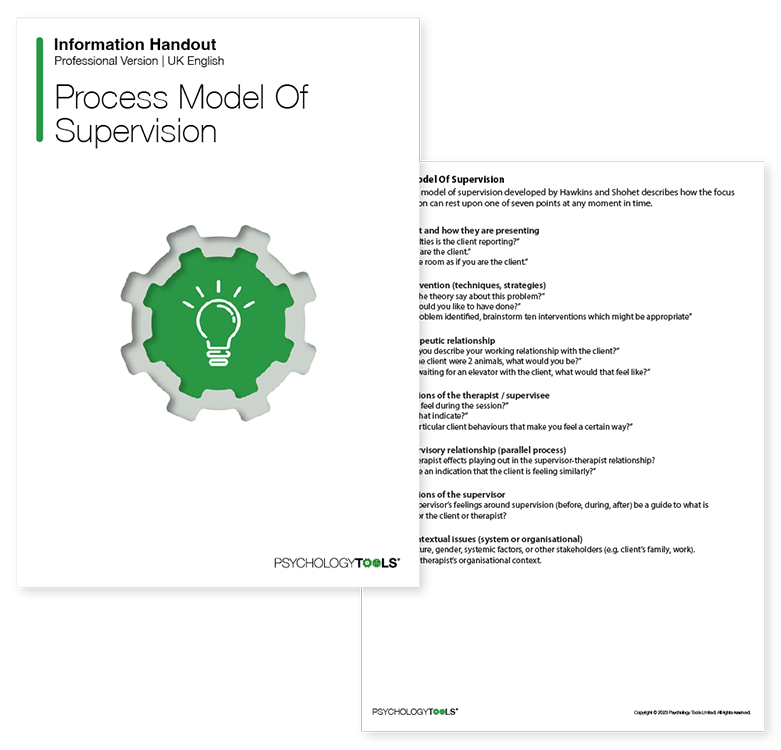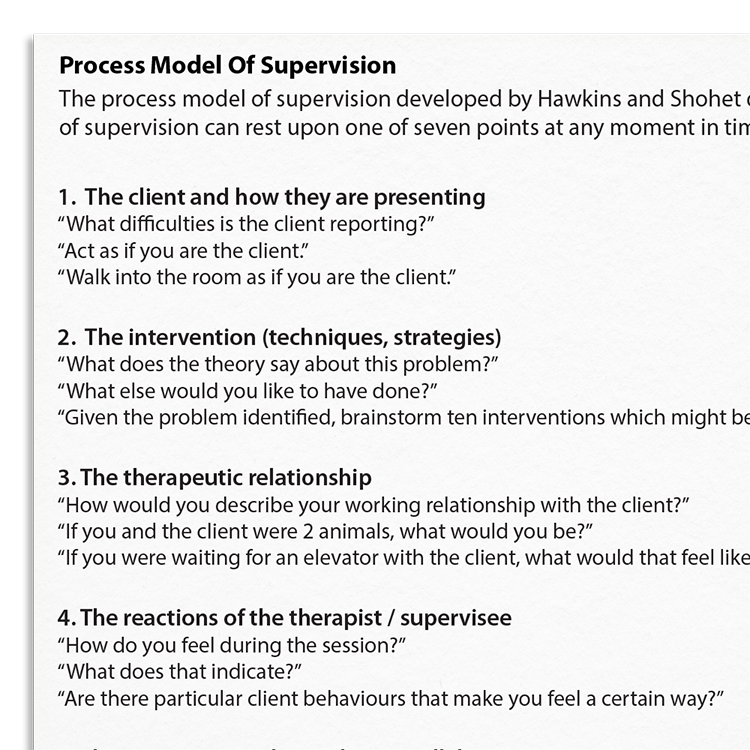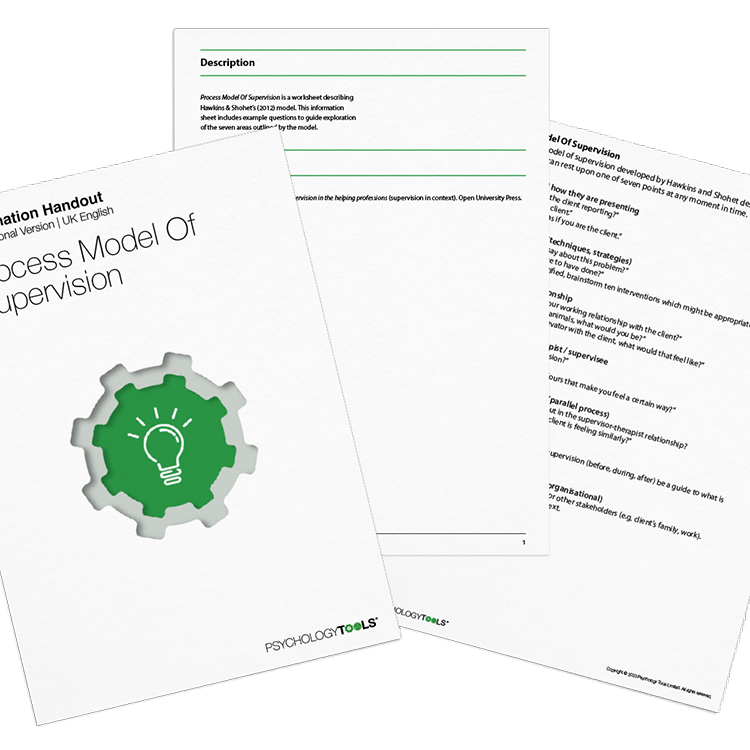Professional version
Offers theory, guidance, and prompts for mental health professionals. Downloads are in Fillable PDF format where appropriate.
This information handout is based on Hawkins and Shohet’s (2012) process model of supervision, supporting exploration across seven key supervision areas.

Offers theory, guidance, and prompts for mental health professionals. Downloads are in Fillable PDF format where appropriate.
To use this feature you must be signed in to an active account on the Advanced or Complete plans.

Hawkins & Shohet (2012) proposed a helpful structure for reflecting upon the focus of a supervision session. This information sheet includes example questions to guide exploration of the seven areas outlined by the model.
The Process Model Of Supervision is a useful tool for both supervisors and supervisees that can guide and inform the supervision process.
Informs the supervision planning and provision.
Supports therapists making use of supervision.
Clinical supervision is an essential part of therapeutic practice. It provides a structured environment for therapists to reflect on their work, ensuring safe and ethical practices, enhancing the quality of the therapies they offer, and promoting their professional development.
The Hawkins and Shohet (2012) process model of supervision adds both depth and flexibility to the supervision process. This model acknowledges that both therapy and supervision are complex relational systems, where learning and change can happen at various levels.
It focuses on seven key areas, including attention to the client, therapeutic interventions, the therapist's inner experience, and the broader systemic context. By considering these interconnected layers, the model fosters a comprehensive understanding of therapeutic work. It enables supervisors and supervisees to navigate between technical, relational, emotional, and contextual perspectives, ultimately deepening their insight and effectiveness.

Just enter your name and email address, and we'll send you Process Model Of Supervision (English US) straight to your inbox. You'll also receive occasional product update emails wth evidence-based tools, clinical resources, and the latest psychological research.
Working...
This site uses strictly necessary cookies to function. We do not use cookies for analytics, marketing, or tracking purposes. By clicking “OK”, you agree to the use of these essential cookies. Read our Cookie Policy